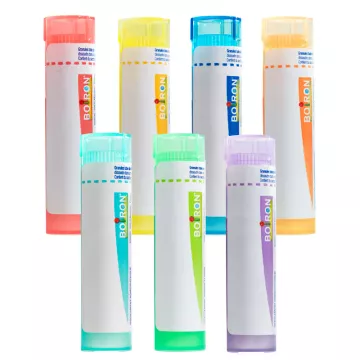
What is skin mycosis?
Cutaneous mycosis is a skin infection caused by fungi, mainly dermatophytes, yeasts or molds. These micro-organisms proliferate in warm, humid environments, making certain parts of the body, such as the feet, armpits and intertriginous areas, particularly vulnerable.
How can I recognize the symptoms of skin mycosis?
The most common symptoms of skin mycosis include redness, intense itching, rashes and sometimes blister-like lesions. Infections can also manifest as skin thickening, cracking and scaling. It's crucial to consult a healthcare professional for an accurate diagnosis.
What causes cutaneous mycoses?
Skin mycoses are often caused by direct contact with fungi or by transmission from contaminated objects, such as towels, clothing or surfaces in public places like swimming pools or showers. Excessive sweating and the wearing of non-breathable clothing can also encourage their development.
How can skin mycosis be effectively treated?
Treatment of skin mycoses depends on the extent and location of the infection. Antifungal treatments, available as creams, lotions or powders, are commonly used to eliminate the infection. In some cases, oral medications may be prescribed by a dermatologist to treat more severe or recalcitrant infections.
Can skin mycoses be prevented?
Skin mycoses can be prevented by maintaining good personal hygiene, carefully drying areas likely to be infected, and wearing loose-fitting, breathable clothing. It's also advisable to avoid sharing personal objects and wearing sandals in damp public places.
When should you consult a doctor about skin mycosis?
It is advisable to consult a doctor as soon as the first symptoms of skin mycosis appear, to avoid complications and obtain appropriate treatment. Warning signs include the persistence of symptoms despite self-treatment, the spread of the infection, or the appearance of pain.
What types of fungi are responsible for skin mycoses?
Skin mycoses can be caused by various types of fungi, each with its own specific characteristics. Dermatophytes are the most common, responsible for infections such as ringworm and athlete's foot. Yeasts such as Candida albicans can also cause mycosis, particularly in moist, folded areas of the skin. Finally, molds, although less common, can also cause skin mycoses, particularly in conditions of high heat and humidity.
Are skin mycoses contagious?
Yes, skin mycoses are contagious. They can be transmitted from one person to another through direct contact with infected skin, or indirectly via contaminated objects such as shoes, bath mats, or even surfaces in gyms. It's important to adopt strict hygiene measures to limit the spread of infection, especially in sports and other shared environments.
How long does the treatment of skin mycosis last?
The duration of treatment for cutaneous mycosis varies according to the extent of the infection and the type of fungus involved. In general, topical treatments should be applied for at least two to four weeks. For more severe infections, or in cases where topical medication is not sufficient, oral treatments may be necessary and last for several months. It is essential to follow the doctor's instructions and continue treatment for the recommended duration to avoid a recurrence of the infection.
Are children more susceptible to skin mycoses?
Children may indeed be more susceptible to skin mycoses due to activities that expose them to fungus-prone environments, such as public swimming pools and playgrounds. What's more, their still-developing immune systems can make it difficult for them to fight off fungal infections. It's important to teach children good hygiene practices, such as washing their hands regularly and keeping their personal belongings clean and dry.
What is the link between skin mycoses and pets?
Pets, especially cats and dogs, can be carriers of dermatophytes that cause skin mycoses in humans, known as ringworm. They can transmit these fungi to their owners through direct contact. It's crucial to monitor your pets' skin health and take them to the vet if they show signs of fungal infection. Good hygiene and treatment of infected animals are essential to prevent the transmission of skin fungus to other members of the household.